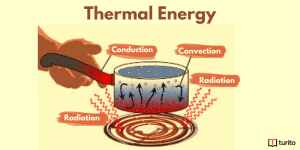It’s possible to say that among people on earth, space rocks arouse both astonishment and dread. However, learning more about meteors and meteorites might clear up some possible doubts. These rocks come from space, yet they all have various names depending on where they originate. The distinction between a meteor and a meteorite can help explain the fundamentals and in-depth knowledge of their comparisons. Let’s examine the distinction between a meteor and a meteorite.
Interesting Facts:
|
Difference between Meteors and Meteoroids
Most meteors, typically grains of comet debris no bigger than a rice grain, burn up before they touch the earth’s surface. Even while meteors are not stars, they leave behind flaming trails, sometimes referred to as “shooting stars”. On the other hand, meteorites are relatively small, naturally occurring, extraterrestrial objects that make it through the earth and touch down on the surface. They are tiny rocky or metallic space objects. Let’s examine the distinction between a meteor and a meteorite.
| Components | Meteor | Meteorite |
| Definition | A meteor, often known as a shooting star, is created when a meteoroid strikes the earth’s atmosphere and vaporises. | A meteorite is a piece of rock or iron that came from outer space as a meteoroid or asteroid and survived through the earth’s atmosphere as a meteor before striking the earth’s surface. |
| Size | They are often in millimetres or smaller sizes. | They might be as small as a billionth of a gramme or as large as 100 kg. |
| Types | There are various types of meteors: Earth grazers, Fireballs, and Bolides. | There are three types of meteorites: Stony, iron, and stony-iron meteorites. |
| Origin | Meteors are part of the solar system’s celestial bodies. | Meteorites come from outer space. |
| Composition | Meteors are igniting metal rocks. | Meteorites are composed of nickel, magnetic components, and metals. |
After knowing about the differences between meteors and meteorites, it’s necessary to understand the two completely.
Have you ever wondered how a star falls after observing one in the night sky? Or is that object we see heading down towards earth a star or some other alien object? What’s the name of this shiny object? A comet, asteroid, or meteor? How can we distinguish between these things? Sometimes a car-sized asteroid that enters the atmosphere burns even before it reaches the planet’s surface. What do they go by?
What is a Meteorite?
During the collisions between two asteroids, a tiny fragment of each asteroid breaks off. These leftover fragments from the impact of asteroids are called meteoroids. A meteorite is a piece of a meteoroid that makes it to earth after surviving its journey through the atmosphere.
Although most meteorites are relatively small, they can be as large as 100 kilograms and as small as a fraction of a gram (the size of a pebble).
Types of Meteorites
It is frequently believed that a person always considers an iron stone while picturing a meteorite. Well, it’s pretty common! Iron meteorites are extremely heavy, thick, and frequently constructed into unique or even magnificent shapes when they fall through our planet’s atmosphere.
Although irons are often associated with how most people imagine a standard space rock to look, they are only one of the three major varieties of meteorites. They are quite rare in comparison to stone meteorites.
Meteorites come in three primary categories:
Iron Meteorites
Most iron meteorites are assumed to be the cores of molten asteroids. They are primarily composed of iron-nickel metal, with just trace levels of sulphide and carbide minerals.
Stony-Iron Meteorites
Stony-iron meteorites are composed of nearly equal amounts of iron-nickel metal and silicate minerals, comprising precious and semi-precious gemstones. They are assumed to be the most exquisite meteorites. Pallasite and mesosiderite are the two forms of stony-iron meteorites.
Stony Meteorites
- Stony meteorites are the most commonly discovered meteorites, composed of silica-rich minerals.
- The two primary categories of stony meteorites are chondrites and achondrites, which include some of the solar system’s oldest components (consisting of meteorites from asteroids, the moon and Mars).
- Chondrites and achondrites can be divided into various subgroups, depending on their structures, compositions, and mineral contents.
What is Meteor?
So, what is a meteor? A meteor is often termed a shooting star. It is the streak of light that people can view in the night sky as a tiny piece of celestial debris that burns up as it travels through the earth’s atmosphere. Because they are so small, most meteoroids that strike the earth’s atmosphere entirely vaporise before they can ever impact the planet’s surface.
Types of Meteor
The meteors that appear closest to the earth’s horizon and have the most colourful and longest tails are known as earth grazers. The most well-known earth grazer was the spectacular daylight fireball of 1972.
Fireballs are considered the most common type of meteors. These are brighter and last longer than an earth grazer. Their size can range from a compact basketball to a mini car.
Bolides generally erupt in the atmosphere and are larger than fireballs. Their eruption causes a sonic boom that is audible and palpable on earth.
Meteor Shower
As a comet reaches the sun, it heats up, and some part of the comet gradually starts vaporising as it reaches the earth’s atmosphere. After the comet has ringed the Sun numerous times, several tiny fragments of a comet are left across its route. When a comet crosses the earth’s path, a meteor shower occurs. As they ignite in the earth’s atmosphere, the comet fragments, most of which are no bigger than a grain of sand grain, leave luminous streaks in the night sky.
Meteors are pieces of debris that penetrate the earth’s atmosphere. Several minor meteors streak across the sky on any given night. During a meteor shower, tens to thousands of meteors can be observed every hour. Many of these meteor showers are predictable and take place annually at the same time.
Meteor Storm
A meteor storm is a powerful meteor shower, resulting when the earth senses a meteor shower soon after the source comet has passed through the outer atmosphere.
A meteor storm is an incredibly rare and very often quick phenomenon that is normally connected to a regular meteor shower and occurs when rates reach 1000 meteors per hour. Such occurrences occur when the earth passes through a meteor cluster or a denser segment inside a meteor stream close to the comet’s (parent) body.
For example, the 2001 Leonid meteor storm was caused by newly released debris that didn’t yet diffuse into the stream’s main body and closely followed Tempel-Tuttle, the parent comet, as it passed through the falling node of the orbit.
Meteor Crater
The term “meteor crater” refers to a depression caused by the collision of an extraterrestrial natural object with the earth or another relatively big solid body, such as the moon, another planet and its satellites, or massive asteroids and comets.
A meteor crater, located close to Winslow, Arizona, is one of the most well-known craters on earth. A 50-metre (164-foot) 150,000-ton meteorite fell into the desert roughly 50,000 years ago, instantaneously creating the crater. The diameter of the meteor crater is 1.2 kilometres (0.75 miles) and 175 metres (575 feet) deep.
Conclusion
Understanding the distinction between a meteor and a meteorite is crucial because many assume both terms have the same meaning. Rather they both are different!
A meteor is a celestial body that enters the earth’s atmosphere and entirely burns out before it reaches the surface. These objects are typically formed of rocks and metals. Most of them normally vanish between 80km and 130km in altitude.
A meteorite is a celestial body (composed of minerals, rocks and metals) that reaches the earth’s atmosphere and makes it to the surface. Larger than meteors that can strike the ground are meteorites.
Frequently Asked Questions
1. How frequently do meteorites strike?
Ans. According to experts, smaller strikes occur five to ten times a year. Strikes of large meteors are less common but happen every five years. According to German mineralogist Addi Bischoff, specialises at the University of Münster. The majority of them land over unpopulated regions without hitting civilians.
2. Explain a meteor shower.
Ans. Each day, roughly 48.5 tonnes (44 tonnes, or 44,000 kilogrammes) of meteoritic debris are thought to fall to earth. A dazzling trail affectionately known as a shooting star is left behind as almost all of the material is annihilated in the earth’s atmosphere. On any given night, we can view many meteors every hour. Meteor showers are occasions when there is a sharp rise in the number of meteors.
3. What is the name of a falling star?
Ans. The terms “shooting stars” and “falling stars” are both used to refer to meteors, which are light streaks across the night sky brought on by meteoroids, or small pieces of cosmic rock and debris, vaporising in the planet’s upper atmosphere.

Relevant Articles
Understanding Thermal Energy: What It Is and How It Works
Thermal energy is essential to our daily lives, from warming …
Understanding Thermal Energy: What It Is and How It Works Read More »
Read More >>Avogadro’s Number: Meaning, Importance, and More
Introduction The concept of measuring the microscopic particles that make …
Avogadro’s Number: Meaning, Importance, and More Read More »
Read More >>Kinetic Friction – Definition, Laws, Types
Kinetic Friction Kinetic force is a force acting between two …
Kinetic Friction – Definition, Laws, Types Read More »
Read More >>




















Comments: